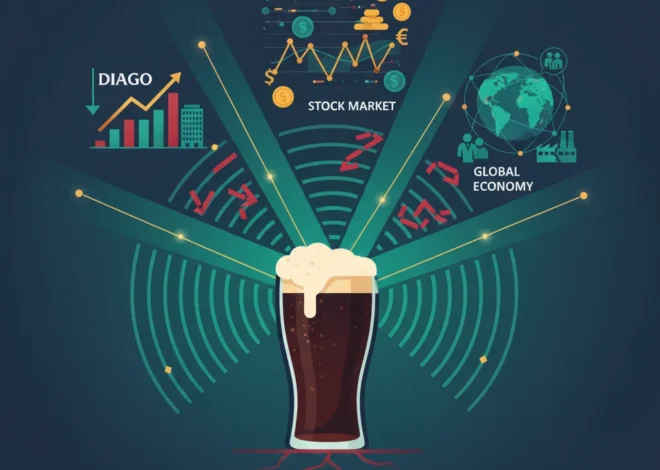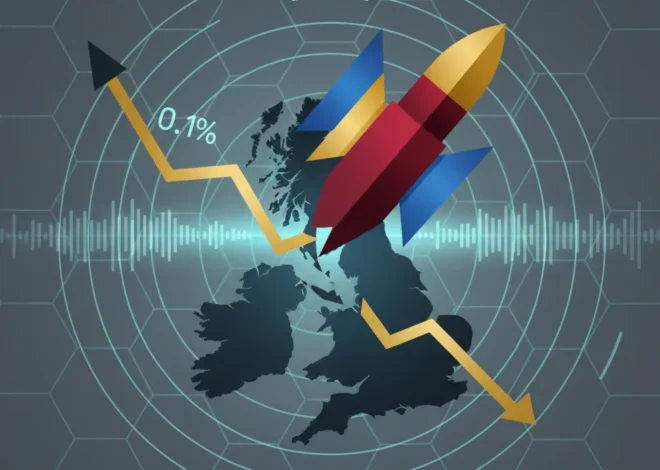
The Pet Economy Paradox: Why Soaring Vet Bills Are a Critical Indicator for the Modern Investor
In households across the country, pets are not just animals; they are cherished family members. This emotional bond has fueled a booming multi-billion dollar industry. However, a troubling new trend is emerging from this human-animal connection, one that carries significant weight for the broader economy. A recent report from the BBC highlights a stark reality: soaring veterinary bills are forcing some pet owners to make agonizing choices, such as cutting back on their own food and fuel. While this appears to be a personal finance story on the surface, for astute investors, finance professionals, and business leaders, it is a critical microeconomic signal with far-reaching implications for consumer behavior, market stability, and technological innovation.
This phenomenon, which could be dubbed “petflation,” is more than just an unfortunate consequence of rising prices. It’s a powerful lens through which we can analyze household financial health, the inelasticity of emotional spending, and the emerging opportunities in sectors ranging from insurance to financial technology. Understanding the deep economic currents beneath this trend is essential for anyone navigating today’s complex financial landscape.
Deconstructing “Petflation”: The Economic Forces Behind a $1,000 Vet Bill
The dramatic increase in the cost of veterinary care isn’t arbitrary. It’s the result of a confluence of powerful economic and social factors that have transformed the pet care industry. For decades, veterinary medicine was a relatively straightforward practice. Today, it mirrors human healthcare in its complexity, sophistication, and unfortunately, its cost. To comprehend the financial strain detailed in recent reports (source), we must first dissect the underlying drivers.
Below is a breakdown of the key factors contributing to rising veterinary costs and their direct financial implications:
| Driving Factor | Economic Implication & Impact on Costs |
|---|---|
| Advanced Medical Technology | Veterinary clinics now offer services once reserved for humans, such as MRIs, chemotherapy, and complex orthopedic surgery. The acquisition and maintenance of this equipment represent a massive capital expenditure, the cost of which is passed on to consumers. |
| Labor Shortages & Wage Growth | A well-documented shortage of veterinarians and specialized technicians has created intense competition for talent. This drives up wages and operational costs for clinics, directly impacting the price of services. |
| Pharmaceutical & Supply Chain Costs | The global supply chain disruptions of recent years have increased the cost of everything from specialized pet medications to basic medical supplies. These input costs are a significant component of every vet bill. |
| Corporate Consolidation | The veterinary industry has seen a wave of consolidation, with large corporations acquiring thousands of independent local practices. This can lead to standardized (and often higher) pricing, reduced competition, and a focus on maximizing shareholder returns. |
| The “Humanization” of Pets | As owners increasingly view pets as family, their willingness to pay for premium, life-extending care skyrockets. This creates a highly inelastic demand curve, where price increases do not proportionally decrease demand, allowing providers to raise prices with less market resistance. |
This convergence of factors creates a perfect storm. The emotional imperative to care for a sick pet clashes with the harsh realities of modern economics, forcing families into financially precarious positions. When households begin sacrificing non-discretionary items like groceries to cover these costs, it signals a level of financial distress that should capture the attention of economists and market analysts alike.
The Maverick and the Megabank: Inside the Landmark Deal Redefining Japanese Finance
The Ripple Effect: From Household Budgets to the Stock Market
The impact of petflation extends far beyond the veterinarian’s waiting room. It creates ripples that touch nearly every corner of the consumer economy, influencing everything from credit card debt levels to the strategic decisions of major corporations.
Impact on Consumer Spending and Debt
When an unexpected $3,000 vet bill lands on the kitchen table, it acts as a shock to a household’s financial ecosystem. The decision to forgo essentials is the most extreme outcome. More commonly, families will:
- Increase Credit Card Debt: High-cost emergency care is often financed with high-interest credit, adding to the national consumer debt burden.
- Deplete Savings: Emergency funds are drained, leaving households more vulnerable to other financial shocks.
- Cut Discretionary Spending: The first casualties are often dining out, entertainment, and travel. This pullback, when aggregated across millions of pet-owning households, can have a measurable impact on the service and hospitality sectors.
This diversion of funds represents a significant reallocation of capital at the consumer level, a trend that should be on the radar of anyone involved in retail or consumer goods investing.
Opportunities and Challenges in Finance and Fintech
Where there is a significant financial pain point, there is an opportunity for innovation. The challenge of affording pet care is becoming a fertile ground for the fintech sector.
- Insurtech’s Rise: The pet insurance market is experiencing explosive growth. Companies are leveraging data to create more sophisticated risk models and user-friendly digital platforms. This is a key area of growth within the broader insurance and finance industries.
- BNPL and Specialized Lending: “Buy Now, Pay Later” services and specialized medical credit providers are increasingly partnering with veterinary clinics. This provides immediate relief for pet owners but raises important questions about consumer debt and responsible banking practices.
- The Blockchain Potential: Looking further ahead, some innovators are exploring how blockchain technology could be applied. A secure, decentralized ledger for a pet’s medical history could streamline the insurance claims process, reduce fraud, and lower administrative costs for both vets and insurers. While still in its infancy, this application of distributed ledger technology showcases how deep tech can address real-world financial friction.
The Silver Surge: Why This "Other" Precious Metal is Reclaiming Its Throne
Stock Market and Investment Implications
For those involved in trading and investment analysis, the pet economy offers a fascinating case study. The industry contains a mix of defensive and growth characteristics.
- Pharmaceutical and Diagnostic Leaders: Companies like Zoetis (ZTS) and IDEXX Laboratories (IDXX) have historically been strong performers, benefiting directly from the trend towards more advanced care. Their pricing power is a key metric to watch.
- Corporate Consolidators: The private and public companies buying up veterinary clinics (such as Mars, Inc. and JAB Holding Company) are making a long-term bet on the inelasticity of pet care spending. Their operational efficiency and integration strategies are critical for investors to analyze.
- The Insurance Sector: Publicly traded insurance companies with growing pet insurance divisions, like Trupanion (TRUP), offer a pure-play investment in this trend. Their customer acquisition costs and loss ratios are key performance indicators.
The challenge for investors is to balance the undeniable long-term growth trend with the emerging risk of consumer affordability. A company that relies solely on price hikes may eventually face a consumer breaking point, while a company focused on innovative financing or insurance solutions may unlock a larger, more sustainable market.
A New Economic Barometer: The “Kibble Index”
Economists have long used unconventional indicators—like the “lipstick index”—to gauge consumer sentiment and financial health. Perhaps it’s time to consider a “Kibble Index”: the point at which households begin trading down from premium to budget pet food, or worse, cutting back on their own necessities to afford pet care. This metric offers a raw, unfiltered view into the financial pressure cooker that many families are experiencing.
Unlike a decision to delay buying a new car or television, the choice to pay for a pet’s life-saving surgery is driven by emotion, not logic. When this emotional spending forces cuts to essential goods, it tells us that household budgets have no slack left. It’s a sign that inflation is not just a number on a spreadsheet but a force causing genuine hardship. For policymakers and leaders in the banking sector, this is a red flag regarding consumer resilience and the potential for a rise in loan defaults and financial instability.
Conclusion: The Intersection of Compassion and Capital
The story of rising vet bills is far more than a niche issue for pet lovers. It is a microcosm of our modern economy, where emotional value, technological advancement, and financial strain collide. It reveals deep truths about consumer priorities, the limits of household budgets in an inflationary environment, and the relentless search for solutions through financial technology and innovative business models.
For investors, entrepreneurs, and financial professionals, the key takeaway is to look beyond the headline. The challenges faced by pet owners are a leading indicator of broader economic trends and a signpost pointing toward significant new market opportunities. By understanding the complex interplay of economics and emotion in the pet care industry, we gain a clearer perspective on the future of consumer finance, insurance, and targeted investment strategies. The future belongs to those who can provide solutions that honor the human-animal bond without breaking the bank.
The Budapest Gambit: How a Potential Trump-Putin Summit Could Reshape Global Markets


